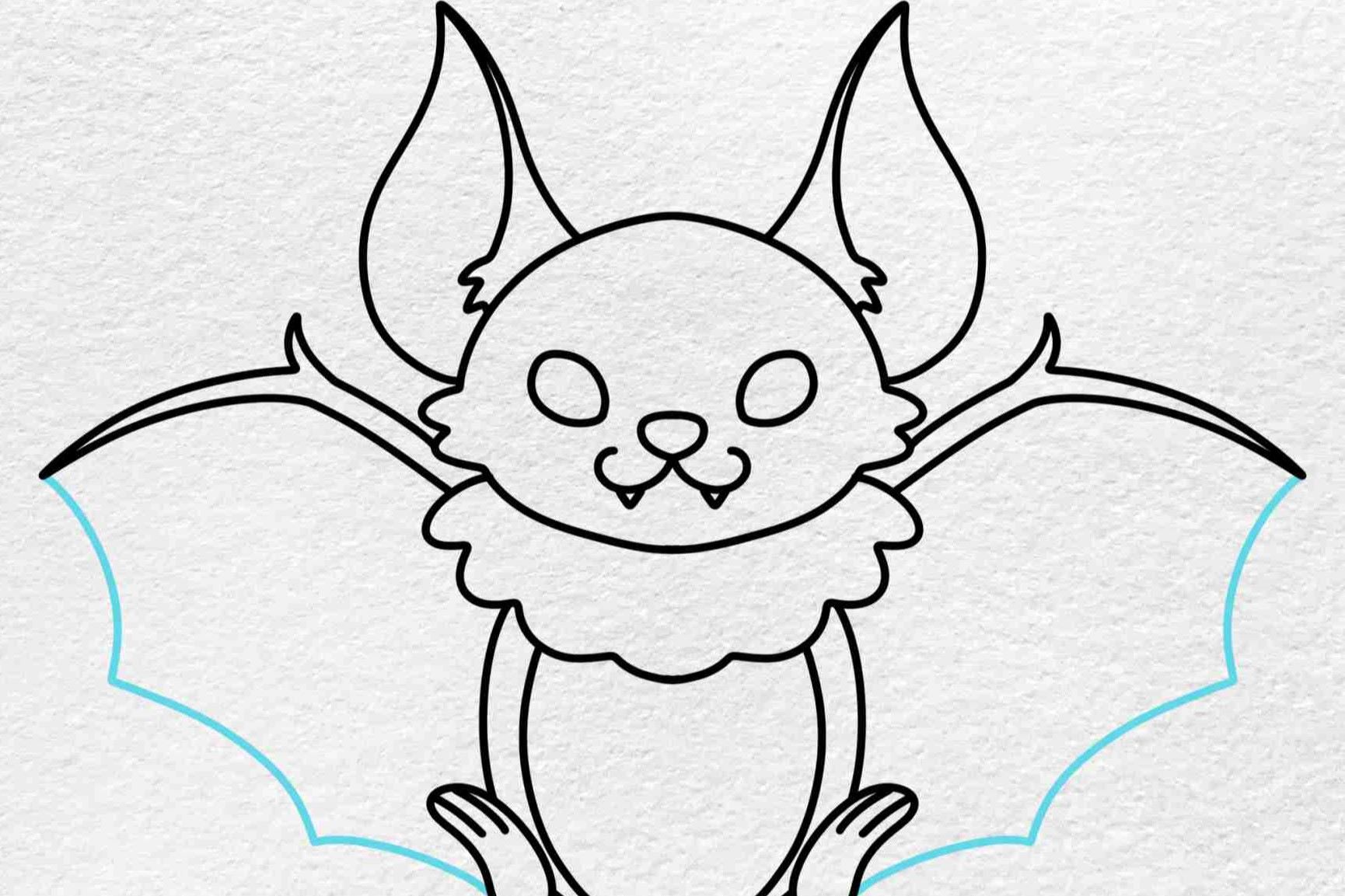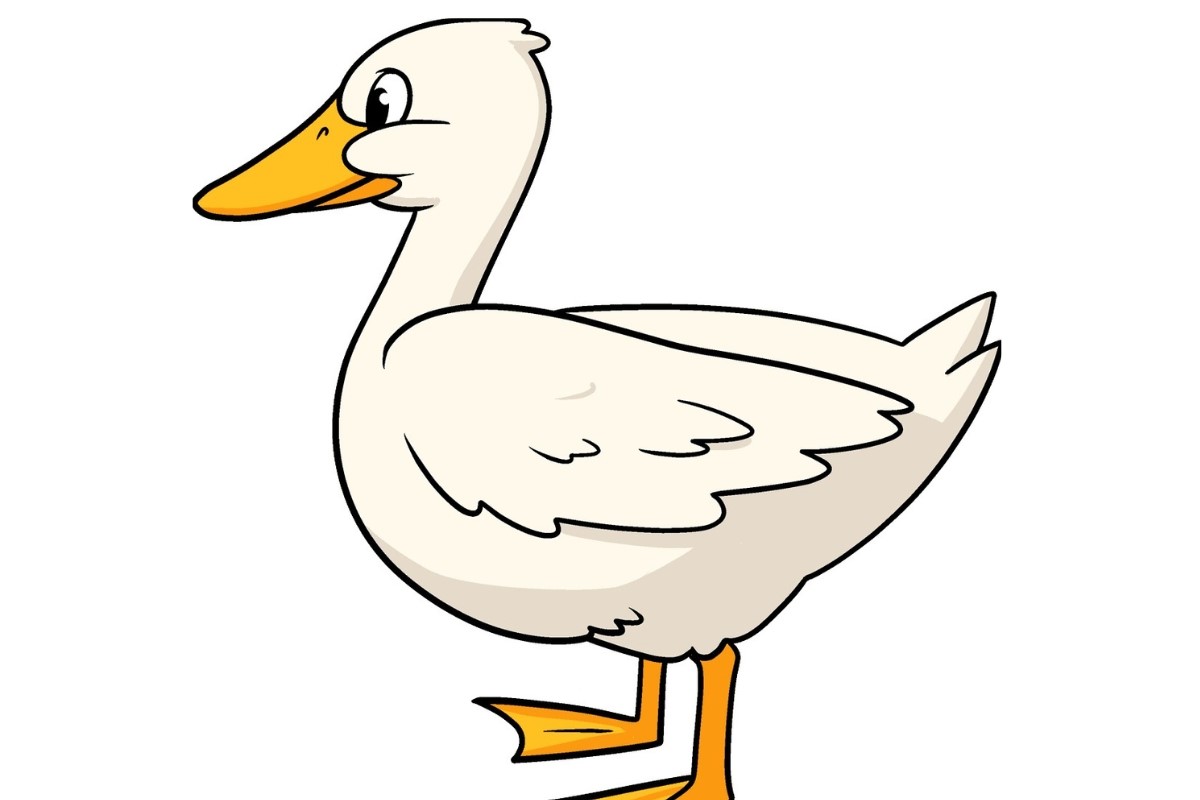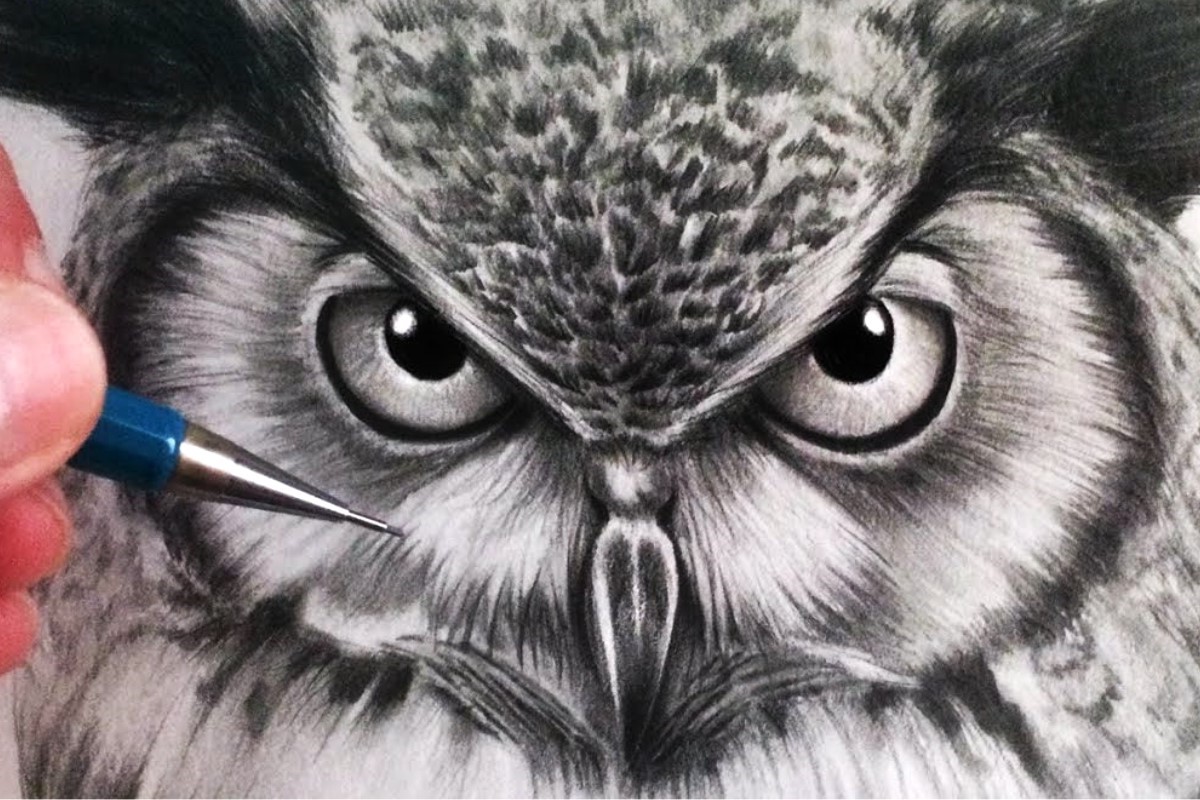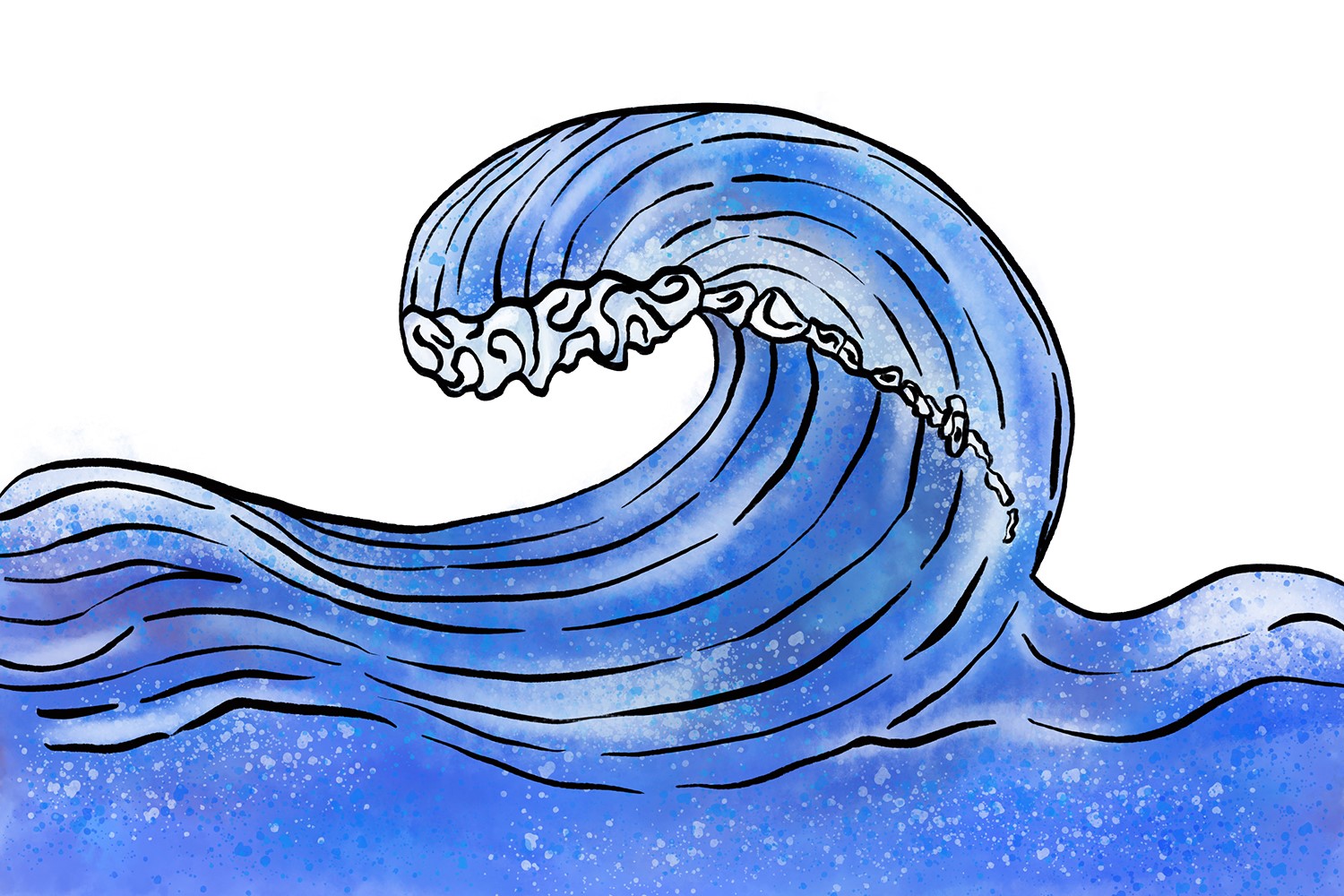Home>Arts and Culture>How To Draw Clouds
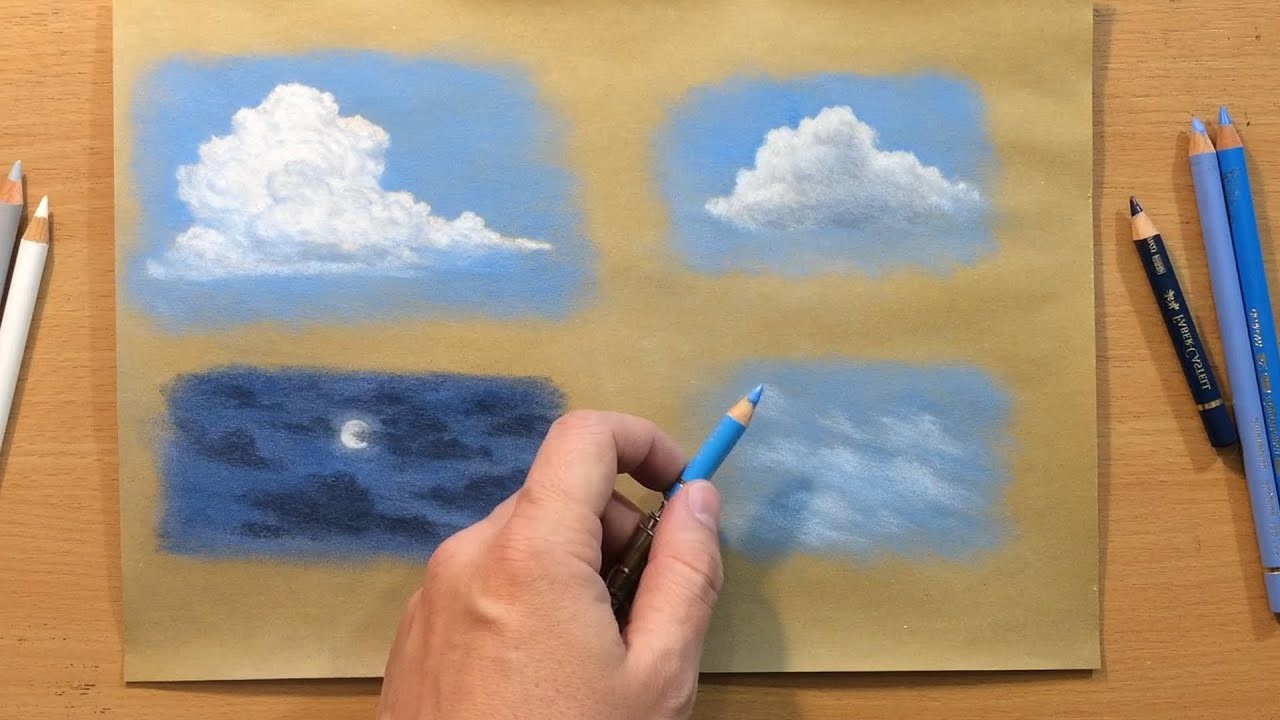

Arts and Culture
How To Draw Clouds
Published: February 26, 2024
Learn how to draw realistic and fluffy clouds with our step-by-step guide. Perfect for artists and culture enthusiasts looking to enhance their skills. Discover the art of cloud drawing today!
(Many of the links in this article redirect to a specific reviewed product. Your purchase of these products through affiliate links helps to generate commission for Noodls.com, at no extra cost. Learn more)
Table of Contents
Introduction
Drawing clouds can be a delightful and rewarding experience, allowing you to bring a touch of nature's beauty to your artwork. Whether you are an aspiring artist or a seasoned illustrator, mastering the art of drawing clouds can add depth and realism to your compositions. Clouds are not only a fundamental element of landscapes but also a versatile subject that can evoke various emotions and moods in your artwork.
The process of drawing clouds offers a unique opportunity to explore the interplay of light and shadow, the fluidity of shapes, and the ever-changing textures found in the sky. From fluffy cumulus clouds to wispy cirrus formations, each type presents its own set of challenges and creative possibilities. By mastering the techniques of cloud drawing, you can elevate the visual impact of your art and create captivating scenes that resonate with viewers.
In this comprehensive guide, we will delve into the art of drawing clouds, providing step-by-step instructions, valuable tips, and insightful tricks to help you capture the ethereal beauty of the sky. Whether you prefer traditional pencil and paper or digital tools, the techniques discussed here can be adapted to suit your preferred medium. So, grab your art supplies and get ready to embark on a creative journey through the mesmerizing world of cloud drawing.
Read more: How To Clean On Cloud Shoes
Materials Needed
Before embarking on your cloud drawing adventure, it's essential to gather the right materials to ensure a smooth and enjoyable creative process. Here's a list of essential tools and supplies that will aid you in bringing the beauty of clouds to life on paper or screen:
-
Drawing Paper: Select a high-quality drawing paper that suits your preferred medium, whether it's graphite pencils, colored pencils, or pastels. The paper's texture and weight play a crucial role in capturing the nuances of cloud formations.
-
Pencils: A set of graphite pencils ranging from 2H to 6B will provide the necessary range for sketching, shading, and adding depth to your cloud drawings. For those working with colored pencils, a variety of hues can be used to depict the subtle tones found in different cloud types.
-
Eraser: A soft, kneaded eraser is ideal for gently lifting graphite or colored pencil marks, allowing you to refine the shapes and highlights within your cloud compositions.
-
Blending Tools: Blending stumps, tortillons, or even tissue paper can be used to create smooth transitions and soft edges when shading and blending the various elements of your clouds.
-
Reference Images: While imagination plays a vital role in art, having access to reference images of real clouds can provide valuable insights into their forms, textures, and lighting. Consider collecting photographs or observing the sky to enrich your understanding of cloud structures.
-
Color Mediums (Optional): If you prefer working with color, consider incorporating soft pastels, colored pencils, or watercolors to infuse your cloud drawings with vibrant hues and atmospheric effects.
-
Workspace: Set up a well-lit and comfortable workspace where you can immerse yourself in the creative process without distractions. A clean, organized environment can enhance your focus and productivity.
By assembling these materials, you'll be well-equipped to embark on your cloud drawing journey with confidence and creativity. With the right tools at your disposal, you can explore the boundless beauty of the sky and translate its mesmerizing forms onto your artistic canvas.
Basic Cloud Shapes
When approaching the task of drawing clouds, understanding the basic cloud shapes serves as a fundamental building block for creating realistic and visually compelling cloud formations. Clouds come in various types, each characterized by distinct shapes that are influenced by atmospheric conditions and air currents. By familiarizing yourself with these basic cloud shapes, you can effectively capture the essence of different cloud varieties in your artwork.
-
Cumulus Clouds: These iconic clouds are often depicted in children's drawings as fluffy, cotton-like formations. They typically have a puffy, cauliflower-like appearance with rounded tops and flat bases. When drawing cumulus clouds, focus on creating irregular, billowing shapes to convey their voluminous and dynamic nature.
-
Cirrus Clouds: Cirrus clouds are renowned for their delicate and wispy appearance, resembling feathery strands or wisps of hair in the sky. These high-altitude clouds exhibit elongated, fibrous shapes that often appear in intricate, filamentous patterns. When rendering cirrus clouds, emphasize their fine, thread-like textures and elongated forms to capture their ethereal beauty.
-
Stratus Clouds: Stratus clouds are characterized by their expansive, layered structures that blanket the sky in a uniform fashion. These low-altitude clouds often appear as a continuous, featureless sheet, creating a sense of overcast or gloomy weather. When portraying stratus clouds, focus on conveying their broad, horizontal expanse and soft, diffuse edges to evoke a tranquil or moody atmosphere.
-
Nimbus Clouds: Nimbus clouds, commonly associated with rain and stormy weather, encompass various cloud types such as nimbostratus and cumulonimbus. These clouds exhibit dense, dark masses with a layered or towering appearance, often accompanied by precipitation. When illustrating nimbus clouds, emphasize their imposing, turbulent forms and the interplay of light and shadow to convey their dramatic and dynamic presence.
By mastering the art of depicting these basic cloud shapes, you can lay a strong foundation for creating captivating and evocative cloudscapes in your artistic endeavors. Whether you're aiming to portray a serene, sun-dappled sky or a tumultuous, thunderous atmosphere, understanding the nuances of basic cloud shapes empowers you to infuse your artwork with depth, emotion, and visual impact.
Adding Detail and Texture
Once you have sketched the basic shapes of your clouds, the next crucial step is to infuse them with intricate details and captivating textures that bring them to life on the page. Adding detail and texture to your cloud drawings allows you to convey the nuanced characteristics of different cloud types, from the soft billows of cumulus clouds to the delicate wisps of cirrus formations. By employing various shading techniques and texture-enhancing methods, you can elevate the visual richness and realism of your cloud compositions.
Shading Techniques
Shading plays a pivotal role in imparting depth and dimension to your cloud drawings. To create the illusion of volume and form, consider employing techniques such as hatching, cross-hatching, and stippling. These methods enable you to manipulate light and shadow, enhancing the three-dimensional quality of your clouds. When shading cumulus clouds, focus on accentuating their rounded, voluminous shapes by employing gentle, curved strokes that follow the contours of the forms. For cirrus clouds, utilize delicate, feathery strokes to evoke the ethereal, wispy textures characteristic of these high-altitude formations. Experiment with varying pressure and pencil grades to achieve subtle gradations and soft transitions, capturing the intricate details of each cloud type.
Read more: How To Draw People
Texture-Enhancing Methods
Incorporating texture-enhancing techniques can infuse your cloud drawings with a sense of tactile realism and visual interest. Consider using blending tools such as tortillons or tissue paper to soften edges and create seamless transitions between light and shadow within your clouds. Blending can also emulate the soft, diffused appearance of clouds, particularly in stratus formations where a smooth, uniform texture is prevalent. Additionally, employing a kneaded eraser to lift off highlights and create subtle tonal variations can mimic the delicate, airy textures found in cirrus clouds, enhancing their ephemeral and diaphanous qualities.
Atmospheric Effects
To further enhance the authenticity of your cloud drawings, consider incorporating atmospheric effects such as aerial perspective and light diffusion. Aerial perspective, which involves depicting distant objects with subdued contrast and muted colors, can be applied to convey the vastness and depth of expansive cloudscapes. By subtly adjusting the intensity of shadows and highlights in distant clouds, you can evoke a sense of atmospheric distance and grandeur. Moreover, simulating the interplay of light and moisture within clouds through gentle blending and strategic erasing can evoke the mesmerizing luminosity and translucency observed in backlit or sunlit cloud formations.
By integrating these techniques and methods into your cloud drawings, you can imbue them with a captivating interplay of detail, texture, and atmospheric authenticity. Whether you seek to evoke the serene tranquility of a sun-kissed sky or the dramatic intensity of a stormy horizon, mastering the art of adding detail and texture to your cloud compositions empowers you to create evocative, visually compelling artworks that resonate with viewers.
Adding Shadows and Highlights
Adding shadows and highlights is a pivotal stage in the process of bringing depth and dimension to your cloud drawings. By skillfully incorporating shadows and highlights, you can infuse your clouds with a sense of volume, luminosity, and atmospheric realism. This essential step allows you to emulate the interplay of light and shadow that defines the visual character of clouds, enhancing their visual impact and evoking a compelling sense of presence within your artwork.
When approaching the task of adding shadows and highlights to your cloud drawings, it's crucial to observe and understand the behavior of light as it interacts with different cloud types. For instance, cumulus clouds, with their voluminous, billowing forms, often cast soft, diffused shadows on their undersides, creating a sense of depth and dimension. By carefully shading the lower regions of cumulus clouds with gentle, graduated tones, you can convey the subtle interplay of light and shadow, accentuating their rounded, three-dimensional shapes.
Similarly, cirrus clouds, renowned for their delicate, wispy nature, exhibit intricate patterns of light and shadow as they interact with the ambient atmosphere. By delicately applying subtle shading and highlighting techniques, you can capture the ethereal translucency and luminosity of cirrus clouds, infusing them with an enchanting sense of lightness and airiness.
In the case of nimbus clouds, which often herald stormy weather and dramatic atmospheric conditions, the strategic application of shadows and highlights can evoke a sense of turbulence, energy, and dynamic movement. By emphasizing the contrast between dark, brooding shadows and brilliant, illuminated areas, you can convey the dramatic intensity and imposing presence of nimbus clouds, creating a compelling visual narrative within your artwork.
To achieve convincing shadows and highlights in your cloud drawings, consider the direction and quality of light sources, whether it's the gentle radiance of a sunlit sky or the dramatic chiaroscuro of a stormy horizon. By carefully observing the interplay of light and atmosphere, you can strategically apply shading and highlighting techniques to evoke the nuanced textures and luminous qualities inherent in different cloud formations.
By skillfully integrating shadows and highlights into your cloud drawings, you can elevate the visual impact and authenticity of your artwork, imbuing your compositions with a captivating sense of atmosphere, depth, and emotional resonance. This essential stage of the drawing process empowers you to create evocative, visually compelling cloudscapes that captivate viewers and evoke a profound sense of wonder and awe.
Tips and Tricks
-
Observe the Sky: Spend time observing the sky at different times of the day and in various weather conditions. Pay attention to the shapes, textures, and lighting of clouds, allowing these observations to inform and inspire your artistic interpretations.
-
Experiment with Different Mediums: Explore the versatility of different drawing and coloring mediums such as graphite pencils, colored pencils, pastels, and watercolors. Each medium offers unique opportunities to capture the ethereal qualities of clouds and create diverse visual effects.
-
Embrace Imperfection: Clouds are inherently organic and ever-changing. Embrace the natural irregularities and asymmetry in your cloud drawings, as these nuances contribute to the authenticity and dynamism of your artwork.
-
Utilize Negative Space: Leverage the concept of negative space to define the shapes and contours of clouds. By strategically leaving areas of the paper untouched, you can create the illusion of airy, expansive skies and enhance the visual impact of your cloud compositions.
-
Play with Scale and Perspective: Experiment with varying the scale and perspective of clouds within your artwork. By juxtaposing distant, diminutive clouds with larger, prominent formations, you can convey a sense of vastness and depth, enriching the visual narrative of your compositions.
-
Incorporate Movement and Flow: Capture the sense of movement and fluidity inherent in clouds by employing dynamic, gestural strokes and organic shapes. Emphasize the directional flow of cloud formations, infusing your artwork with a sense of energy and atmospheric dynamism.
-
Seek Inspiration from Art History: Explore the depictions of clouds in renowned artworks throughout history, studying the techniques and interpretations of master artists. Drawing inspiration from the rich tradition of cloud representation can enrich your artistic vocabulary and inform your creative approach.
-
Practice Patience and Observation: Cloud drawing requires patience and keen observation. Take the time to study the subtle shifts in light and form within cloudscapes, allowing these observations to inform your artistic decisions and refine your drawing skills.
-
Emphasize Contrast and Drama: Whether portraying serene, sunlit skies or dramatic, stormy atmospheres, emphasize the contrast between light and shadow to evoke a sense of drama and emotional resonance in your cloud drawings.
-
Express Emotion and Atmosphere: Infuse your cloud drawings with a sense of emotion and atmosphere, aiming to evoke specific moods and sensations through the portrayal of clouds. Consider the emotional impact you wish to convey and tailor your drawing techniques accordingly.
By incorporating these tips and tricks into your artistic practice, you can elevate your cloud drawing skills, expand your creative horizons, and imbue your artwork with captivating depth, emotion, and visual allure.
Read more: How To Draw A Squirrel
Conclusion
In conclusion, the art of drawing clouds offers a captivating journey through the boundless beauty and dynamic nature of the sky. By mastering the techniques of cloud drawing, artists can infuse their compositions with a sense of atmosphere, depth, and emotional resonance, creating visually compelling artworks that resonate with viewers. From the soft billows of cumulus clouds to the delicate wisps of cirrus formations, each cloud type presents a unique opportunity for artistic exploration and expression.
Through the careful observation of real clouds and the application of shading, highlighting, and texture-enhancing techniques, artists can bring a sense of authenticity and luminosity to their cloud drawings. The interplay of light and shadow within cloudscapes evokes a profound sense of atmosphere and visual drama, allowing artists to convey specific moods and sensations through their artwork.
Furthermore, the versatility of different drawing and coloring mediums empowers artists to experiment with diverse visual effects, from the subtle tonal variations of graphite pencils to the vibrant hues of colored pencils and pastels. Embracing imperfection and organic irregularities in cloud formations adds a sense of dynamism and natural beauty to artistic interpretations, capturing the ever-changing essence of the sky.
By incorporating tips such as observing the sky, playing with scale and perspective, and emphasizing contrast and drama, artists can expand their creative horizons and refine their cloud drawing skills. The rich tradition of cloud representation in art history serves as a wellspring of inspiration, offering valuable insights into the techniques and interpretations of master artists.
Ultimately, the art of drawing clouds transcends mere representation, inviting artists to evoke emotion, atmosphere, and a sense of wonder through their creations. Whether portraying tranquil, sun-dappled skies or tumultuous, stormy horizons, cloud drawing enables artists to craft evocative narratives that resonate on a profound visual and emotional level.
In essence, the art of drawing clouds is a testament to the timeless allure and expressive potential of nature's ever-changing canvas. It invites artists to embark on a creative odyssey through the mesmerizing world of cloudscapes, where the ethereal beauty of the sky becomes a source of inspiration, contemplation, and artistic revelation.








